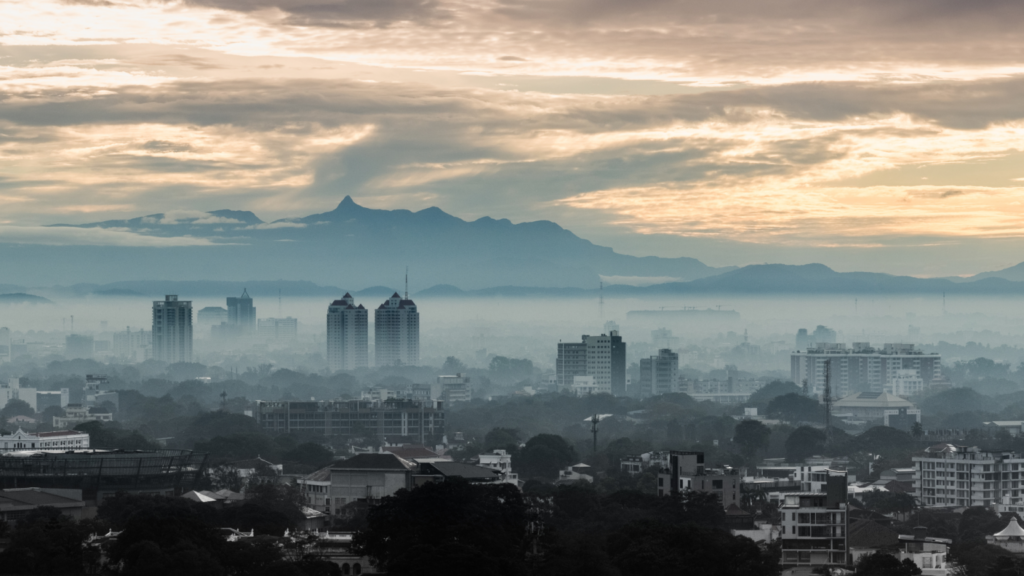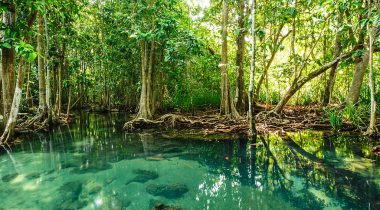
Dragonflies are no strangers to us. Those colourful long-bodied insects can be found in home gardens—especially those with ponds or fountains—and in the wild near lakes, river, streams, and other bodies of water.
However, there is another closely related group of insects known as damselflies, which are often misidentified as dragonflies, due to their closely similar features, behaviour, and habitat preference.
Amila Prasanna Sumanapala, author of A Field Guide to the Dragonflies and Damselflies, gave Roar Media more details about these two fascinating groups of creatures.
Dragonfly Or Damselfly?
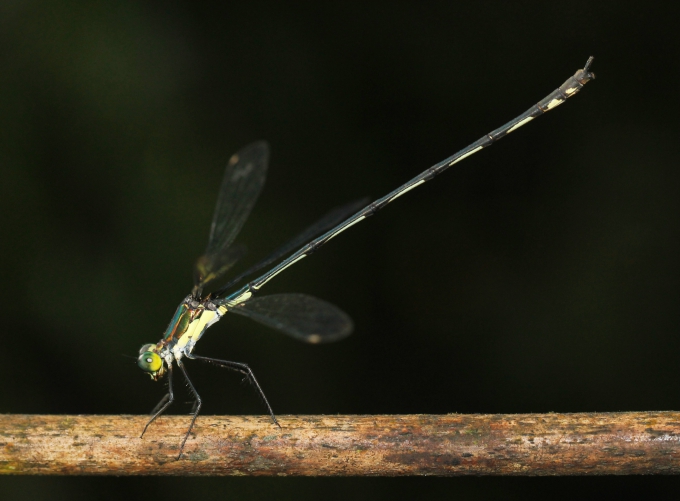
The Sri Lanka Emerald Spreadwing—one of the endemic species of damselfly found in the island. Image credit Amila Sumanapala
Both dragonflies and damselflies are collectively classified under the order odonata, and according to Sumanapala, this order was named by danish Zoologist J. C. Fabricius in the year 1793. The word odonata is derived from the Greek word odon which means tooth, as dragonflies and damselflies, have toothed mandibles.
“Dragonflies belong to the suborder anisoptera and damselflies belong to the suborder zygoptera,” Sumanapala said.
“From a distance, it is difficult to differentiate between dragonflies and damselflies. It is only by paying close attention to some of their external features, that these creatures can be clearly identified,” he added.
There are a few features which differ between the two different creatures: for example both damselflies and dragonflies have compound eyes, but damselflies have eyes which are located on either side of their heads, while dragonflies have close set eyes.
Both damselflies and dragonflies also have two pairs of wings—while damselflies’ wings are almost identical in shape and size, dragonflies have hind wings which are longer, larger and have a wider base than their forewings.
The third differing feature between the two creatures is the shape of their bodies—damselflies have thin and elongated structures, while dragonflies have wider bodies.
Both adult dragonflies and damselflies are carnivores who feed on other flying insects, like mosquitoes and flies. Their well-developed compound eyes, are highly capable of motion detecting, and their powerful wings and ability to fly at high speed make them very good at hunting.
The Local Dragonflies And Damselflies
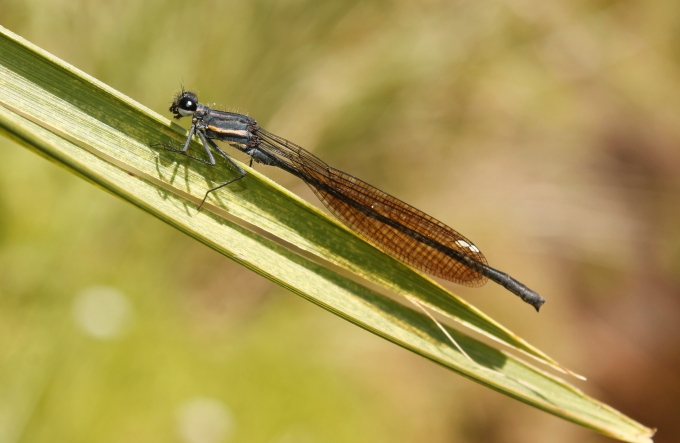
The Smokey-winged Threadtail—a species of dragonfly endemic to Sri Lanka. Image credit Amila Sumanapala.
In Sri Lanka, there are 129 species of odonates; fifty seven of these species are endemic, while a further 8 subspecies—of non-endemic species—are considered to be endemic to the island.
According to the IUCN National Red List of Sri Lanka, which was updated in 2012, 61 species (51.7%) of Sri Lankan odonata were found to be threatened with extinction. A further 11 species (9.3%)—including five of the endemic species—were found to be Data Deficient species, meaning that there is no information available about these species.
Some of the species of Sri Lankan odonata which are critically endangered include: the Sri Lanka Emerald Spreadwing (Sinhalestes orientalis), the Sri Lanka Vermilion Forester (Lyriothemis defonsekai) and the Sri Lanka Smokey-winged Threadtail (Elattoneura leucostigma).
The Sri Lanka Emerald Spreadwing, belongs to an entirely endemic genus called Sinhalestes. According to Sumanapala this species was rediscovered in 2012 at the Peak Wilderness Sanctuary—the nature reserve located at the base of Adam’s Peak—after being absent from records for over 150 years. The Sri Lanka Emerald Spreadwing is currently confined to the Peak Wilderness Sanctuary.
The Sri Lanka Vermilion Forester is a species which was discovered recently, and can be found only in a handful of locations in the wet zone of the country—like the Sinharaja forest.
The Sri Lanka Smokey-winged Threadtail, is endemic to Sri Lanka’s wet montane forests, and can only be found near the streams of these forests at an elevation above 1300 m.
All odonate species within the country are given full legal protection through the Amended Act No. 22 of 2009 in the Fauna and Flora Protection Ordinance. Under this act it is prohibited to kill, collect, destroy eggs or odonate larvae, keep live odonata or their parts in possession, and sell or purchase odonata.
The Importance Of Odonata
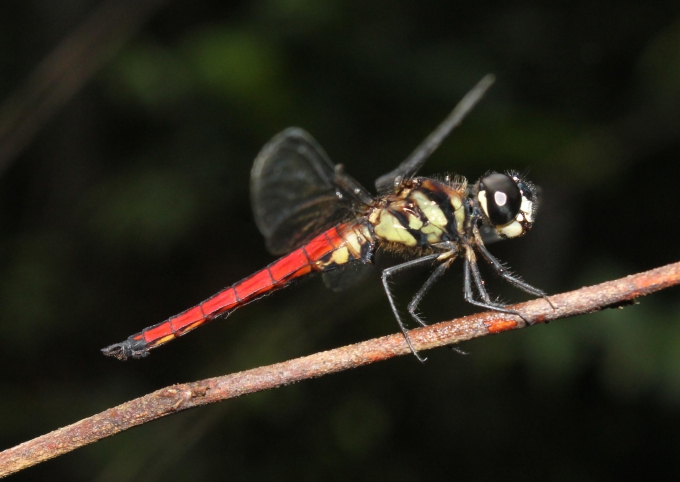
The Vermillion Forester is another species of dragonfly which is endemic to Sri Lanka. Image credit Amila Sumanapala
The fact that dragonflies and damselflies feed on other insects is one factor which makes them important for the ecological balance of the environment. They can biologically control insects which are crop pests and vectors of diseases—like mosquitoes—by feeding on them.
This allows the population of these harmful insects to be kept at bay, and the overall use of pesticides can then be reduced.
Sumanapala also revealed that the presence of these creatures in a certain environment is an indicator of the quality of water in water bodies.
While the adult dragonflies and damselflies are mostly airborne creatures, their eggs and larvae can be found among aquatic vegetation in the very shallow areas of lakes, tanks, streams and other bodies of water.
“Some species of odonata can only breed in water which is clean, because their eggs and larvae are very sensitive to pollution, while others can handle breeding in contaminated water. Thus, by identifying the different species of odonata in an area or body of water, the quality of water can be determined—certain countries have actually developed indexes of water quality, based on the presence of odonata in a certain area,” Sumanapala said.
What We Can Do To Protect These Species
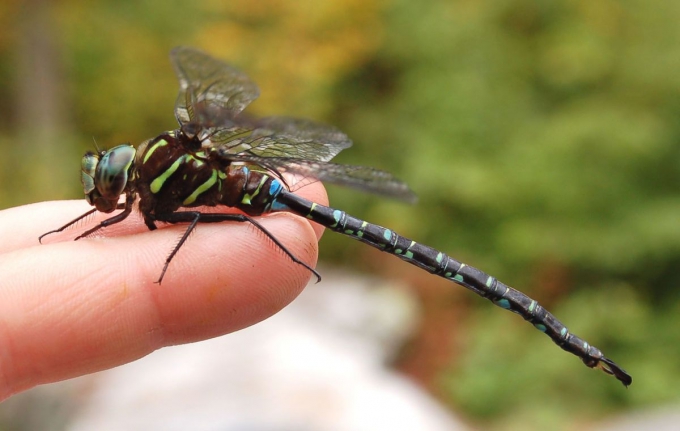
Dragonflies and damselflies are species which are immensely important in maintaining the ecological balance of the country. Image courtesy wvgazettemail.com
Much like the other fauna present in the country, the rising levels of pollution affect the populations of dragonflies and damselflies. While there are legal measures are in place Sumanapala urges the general public to watch out for these creatures.
“The most important measure that we can take to protect dragonflies and damselflies is to maintain their habitats,” he said.
Since odonata lay their eggs in shallow water, Sumanapala pointed out that tanks should be built with gradual slopes as opposed to steep slopes, in order to support the existence of dragonfly and damselfly larvae.
“Pollution sources around the tanks [would] also have to be regulated as water pollution will adversely affect [these creatures],” he added.
Sumanapala also pointed out that rivers and canals that have steep bunds with artificial barriers to minimize erosion are not favourable towards odonata as well.
“If erosion prevention measures are needed, they [need to] be associated with gradually sloping edges and the use of natural vegetation,” he said.
One of the other measures that Sumanapala brought up, was related to shallow ponds which tend to be easily overwhelmed with overgrown aquatic plants—the odonata eggs and larvae need to be in close contact with water, and a pond or other water body overgrowing with shallow plants does allow this.
“The introduction of any plant into a pond habitat should be well planned, and the vegetation needs to be carefully maintained so that it does not overgrow,” he said. Dragonflies and damselflies may be small creatures, but they have immense role in maintaining the ecological balance in the environment. Since Sri Lanka is one country which is regularly plagued by dengue, conserving all species of odonata in the country is of vital importance, because in the long run, it is one way through which we can keep the mosquito population at bay.
Cover: The Common Bluetail damselfly (Ischnura senegalensis) is one of the predominant species of damselfly in Sri Lanka. Image courtesy natureodyssey.com
